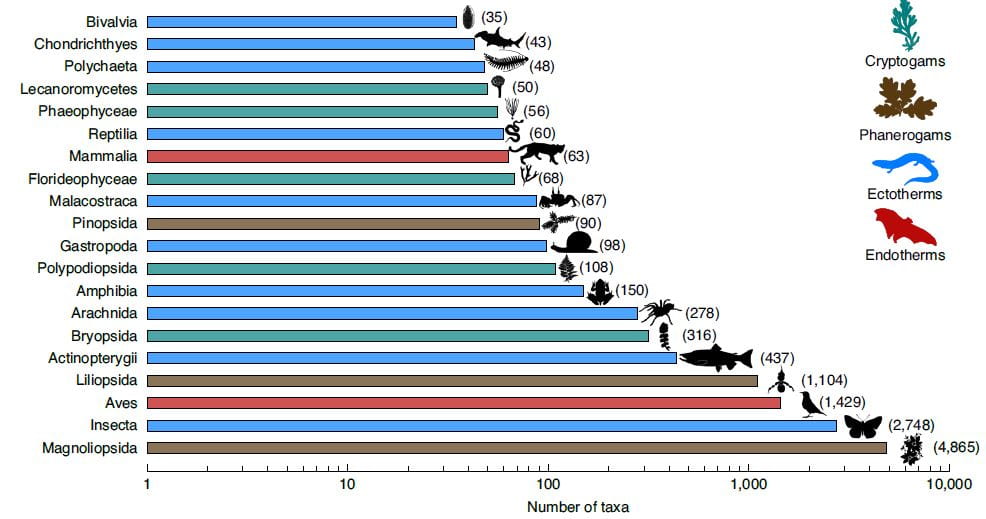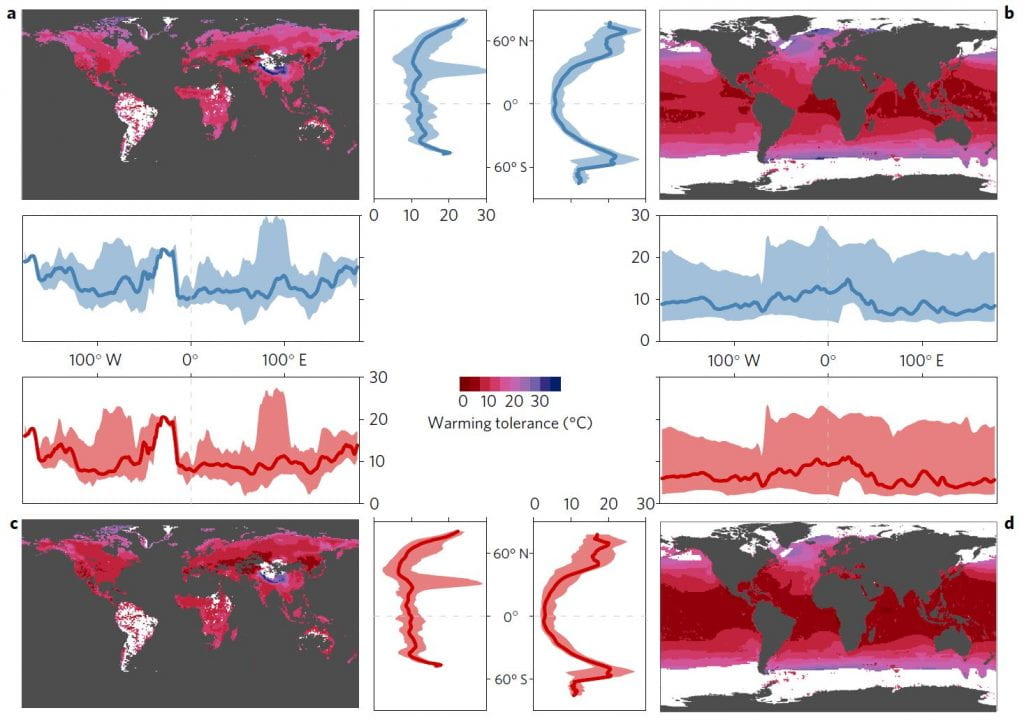Understanding species and community responses to recent climate change
Distribution shifts poleward and upward in elevation are one of the primary responses of species to climate change, as species attempt to track their favorable climate niche across space. In this context, the research in the lab seeks to assess how climate change and the potential interacting effects of other anthropogenic activities have affected species distributions and biodiversity patterns over the last decades. We are particularly interested in understanding how the ecological and evolutionary characteristics of species are linked to the processes of range shifts across taxonomic groups and realms, as well as the consequences of these species reshufflings at higher levels of organization (communities, food webs).
— See the CESAB working group BIOSHIFTS —
Selected publications: Comte L., Olden J.D., Tedesco P.A., Ruhi A., Giam X. (2021) Climate and land-use changes interact to drive long-term reorganization of riverine fish communities globally. Proceedings of the National Academy of Sciences USA, 118: e2011639118. Lenoir J., Bertrand R., Comte L., Bourgeaud L., Hattab T., Murienne J. & Grenouillet G. (2020) Species better track climate warming in the ocean than on lands. Nature Ecology & Evolution, 4: 1044–1059. Comte L., Murienne J. & Grenouillet G. (2014). Species traits and phylogenetic conservatism of climate-induced range shifts in stream fishes. Nature Communications, 5: 5023, 10.1038/ncomm6053.

Ecological and evolutionary mechanisms shaping species niches and community assembly
Understanding the processes shaping species niches and biodiversity dynamics across complex landscapes is critical for both theoretical and conservation purposes. The research in the lab seeks to understand how eco-evolutionary forces shape species niches and how this ultimately defines species distributions and the (re)assembly of communities. Riverine ecosystems are also unique from other spatially structured habitats because the movement of organisms is largely constrained within dendritic networks. In this context, we are also interested in understanding how freshwater population and meta-community dynamics are structured and may change in response to current and future global changes.
— See the sDiv working group sYNGEO—
Selected publications: Larsen S., Comte L., Filipa Filipe A., Fortin M.‐J., Jacquet C., Ryser R., Tedesco P.A., Brose U., Erős T., Giam X., Irving K., Ruhi A., Sharma S., Olden J.D. (2021) The geography of metapopulation synchrony in dendritic river networks. Ecology Letters, 24: 791-801. Comte L., Grantham T., Ruhi, A. (2021) Human stabilization of river flows is linked with fish invasions across the United States. Global Ecology and Biogeography, doi: 10.1111/geb.13258. Comte L., Cucherousset J. & Olden J.D. (2017) Global test of Eltonian niche conservatism of nonnative freshwater fish species between their native and introduced ranges. Ecography, 40: 384–392.

Assessing biodiversity vulnerability in the Anthropocene
As the rate and magnitude of the current biodiversity crisis accelerate, a greater understanding of the taxonomy and geography of the threats to biodiversity is required to guide effective conservation strategies. To tackle this challenge, the research in the lab seeks to develop innovative approaches to understand the vulnerability of biodiversity to novel environments (e.g., climatic vulnerability, invasion risk) across large spatial scales using a combination of species distribution modelling, trait-based approaches and phylogenetic comparative methods.
Selected publications: Comte L., Olden J.D., Lischka, S., Dickson, B.G. (2022) Multi-scale threat assessment of riverine ecosystems in the Colorado River Basin. Ecological Indicators, 138: 108840. Liu C., Comte L., Xian W., Chen Y. & Olden J.D. (2019) Current and projected future risks of freshwater fish invasions in China. Ecography, 42: 2074-2083. Comte L. & Olden J.D. (2017) Climatic vulnerability of the world's freshwater and marine fishes. Nature Climate Change, 7: 718–722.
